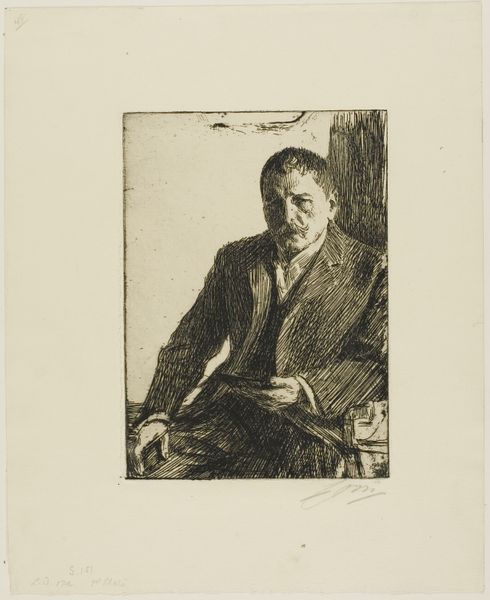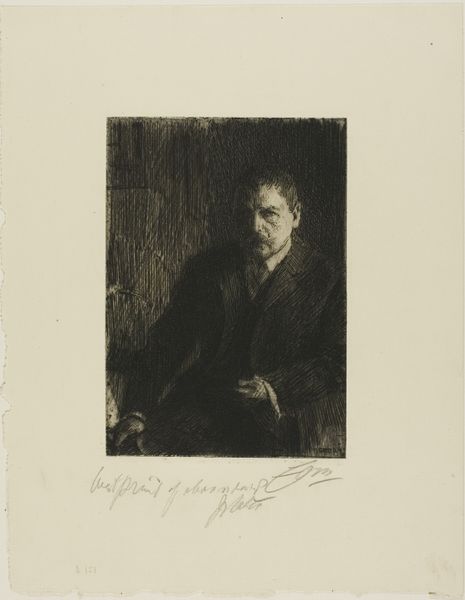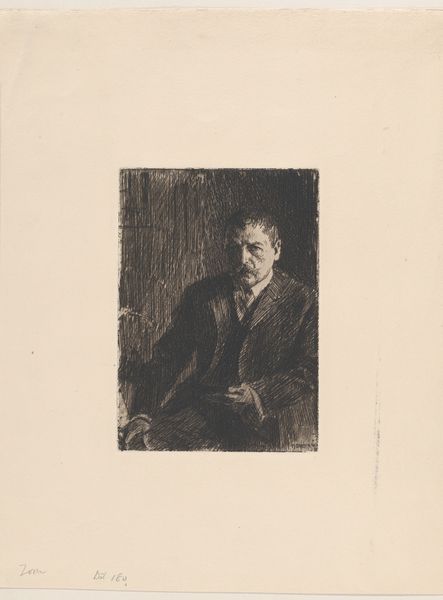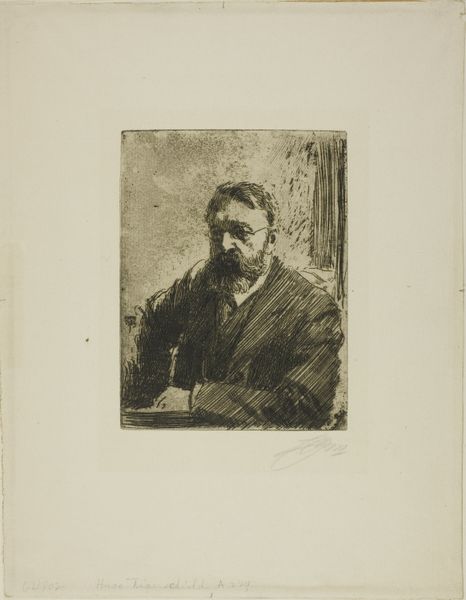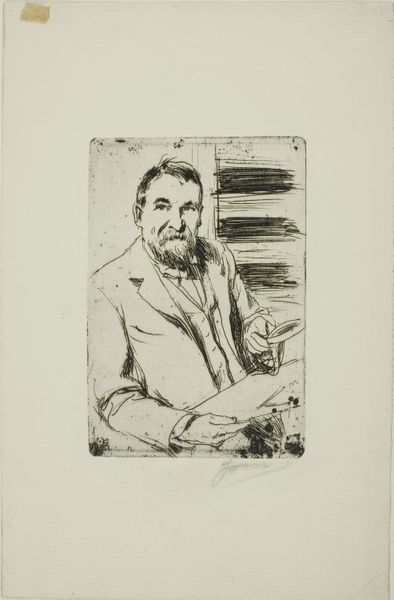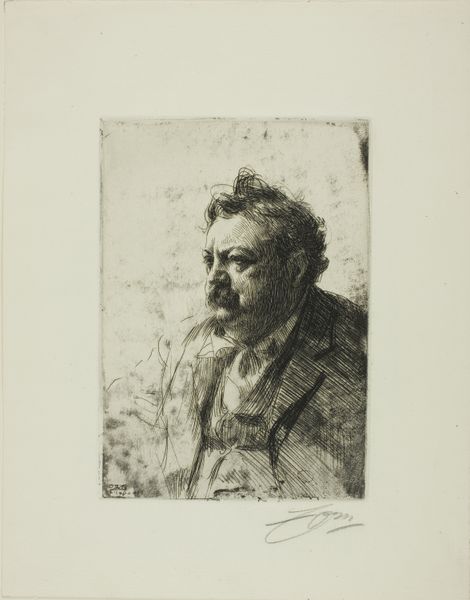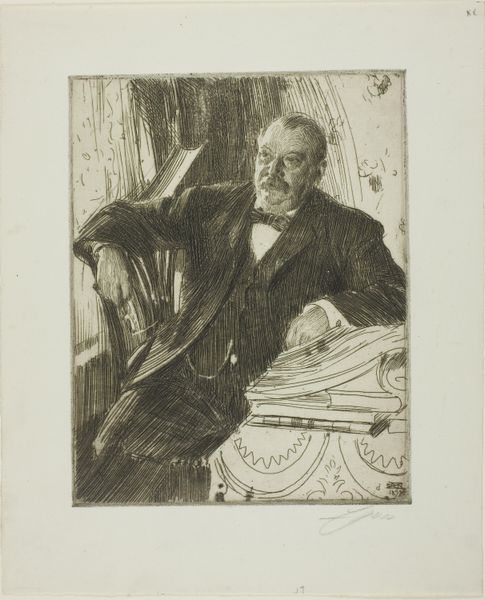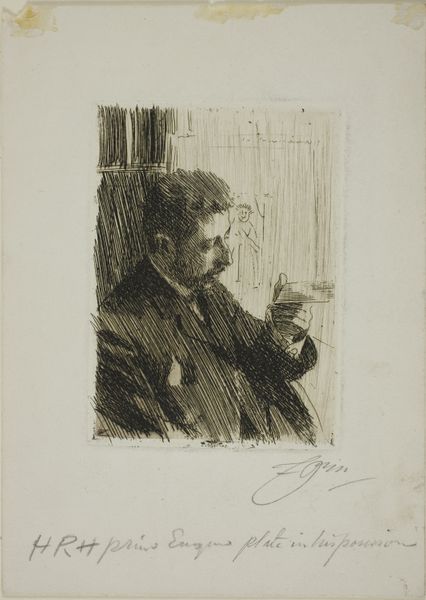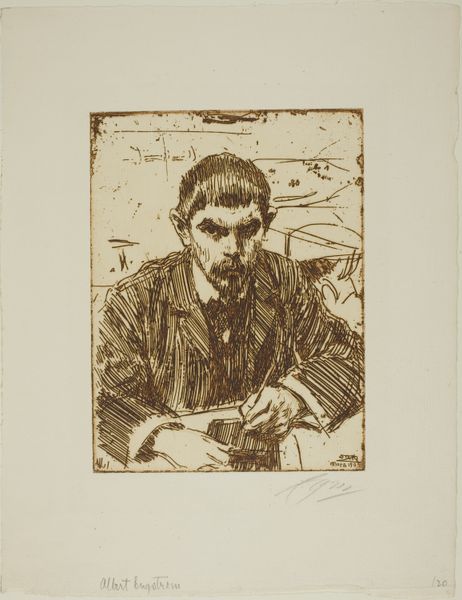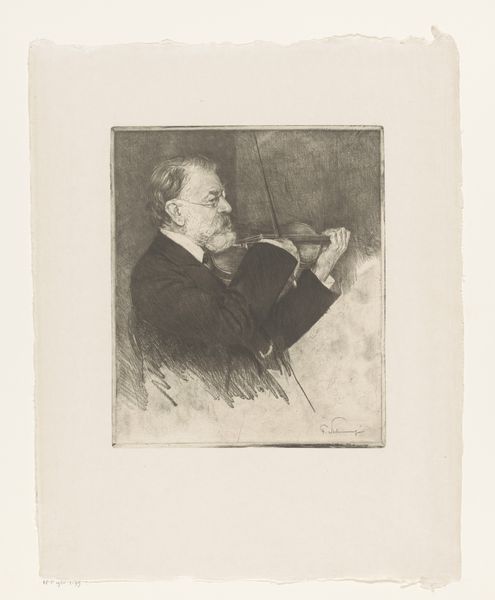
Dimensions: 175 × 125 mm (image/plate); 291 × 229 mm (sheet)
Copyright: Public Domain
Anders Zorn created this self-portrait in 1904 using etching, a printmaking technique that relies on the corrosive power of acid. Zorn would have coated a metal plate with a waxy, acid-resistant substance, then scratched his design into it. The plate was then immersed in acid, which bit into the exposed lines, creating grooves. Ink was applied to the plate, filling these grooves, and the surface was wiped clean. Finally, the image was transferred to paper under high pressure. The resulting print has a distinctive, textured quality, with lines varying in thickness and depth depending on the amount of time the plate spent in the acid bath. Look closely and you can see a web of hatched lines used to create shadows, conveying a sense of depth. The medium was well suited to the demands of a commercial art world; etching allowed for relatively quick and easy reproduction. Consider this work in the context of Zorn's time, when printmaking was becoming increasingly democratized. This was a moment when traditional hierarchies of art and craft were beginning to break down.
Comments
No comments
Be the first to comment and join the conversation on the ultimate creative platform.
